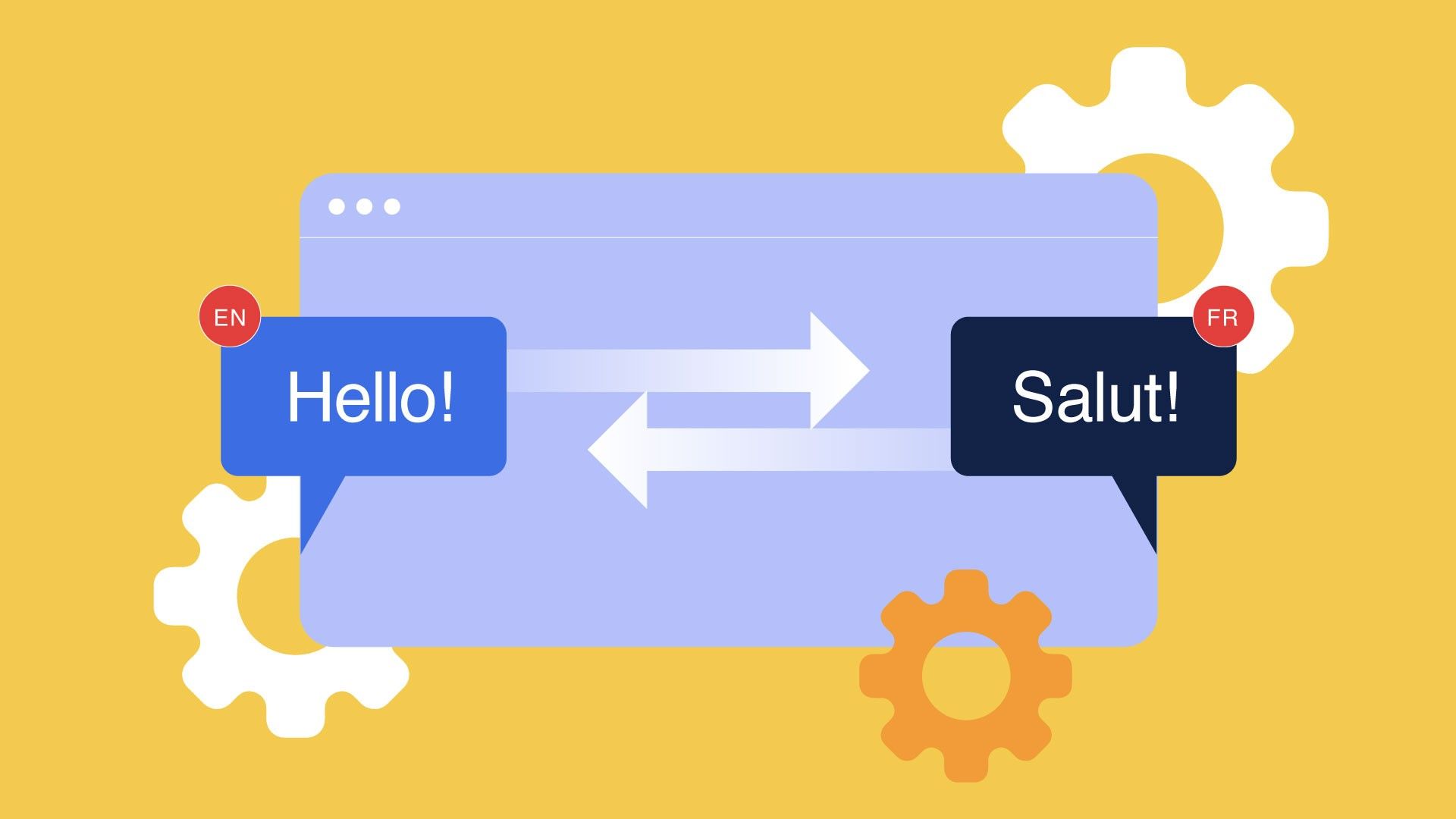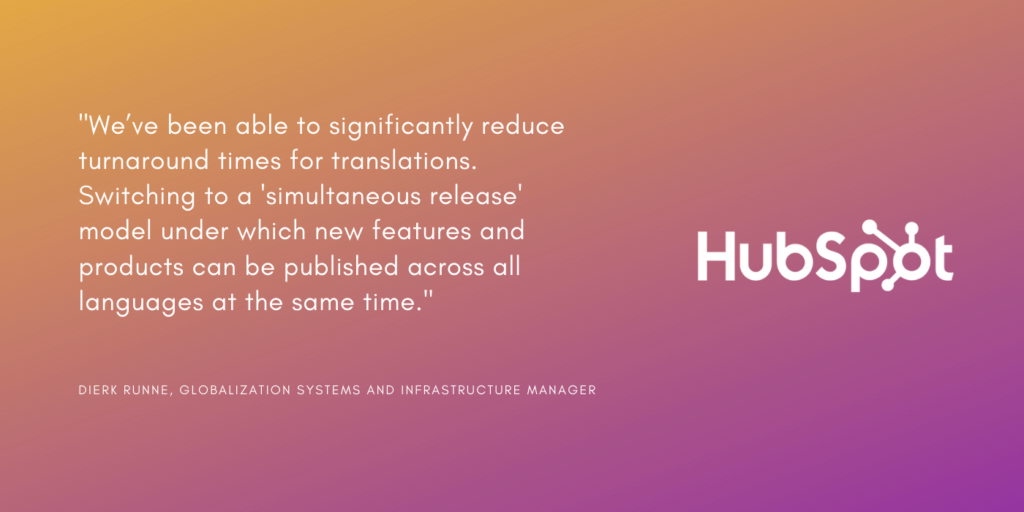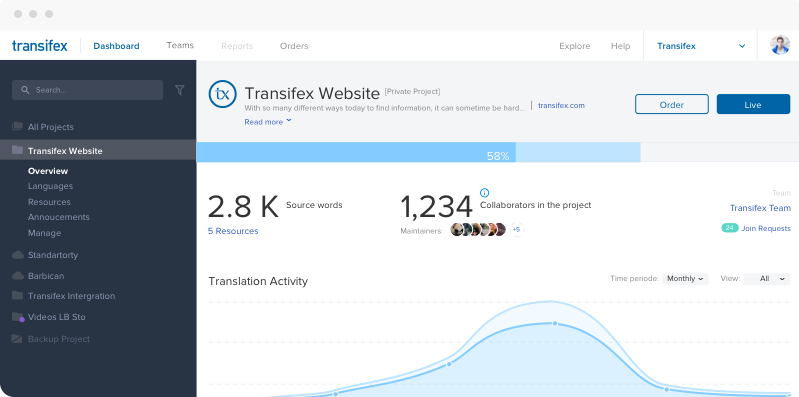Continuously updating your digital products and services can be a very time-consuming process. Modern software, websites, and documents can be particularly demanding. But modern problems require modern solutions – which is where continuous localization comes in.
A well-made continuous localization tool helps you localize seamlessly, effortlessly, and, well, continually. Here is all you need to know about it!
What is Localization?
Localization (l10n) is the process of adapting content to a specific country, city, or, in some cases, even a town. This will likely require you to take multiple things into account, such as:
- Translation and tone of voice.
- Media content (Pictures, videos, etc).
- Units of measurement (Weight, height, etc).
- Currency.
And more, depending on your industry and target audience.
It’s a lot of effort, but research shows that localization has a ROI (Return of Investment) of $25 for every $1 invested. So, in the end, there is no doubt that it’s worth it.
And that’s about the gist of it. If you want to learn more about localization, how it works, and everything else about it, check out this page.
What is Continuous Localization?
Let’s start by mentioning that at its core, continuous localization is still localization. You are still adapting digital content to another locale depending on what works best for ιτ. The goal is vaguely the same.
But there is one core difference between localization and continuous localization. Continuous localization is all about handling ever-changing pieces of content. And, for better or worse, ever-changing content is becoming the new norm.
Some popular examples of ever-changing content are:
- SaaS platforms
- Apps
- Legal documents
- Websites
- Games
- Marketing content
And more, depending on your industry.
We are generally talking about content that you have to continually update and/or improve.
Now, the thing is that handling such a task without the right tools is cumbersome at best.
You need a solution that can bring both the localization and engineering teams into a single place with a mutual workflow. This is where Translation Management Systems (TMS) and software localization tools come in handy to support continuous localization efforts.
3 Reasons why Continuous Localization is the Future
Why bother with continuous localization when traditional solutions have been mostly working fine?
First of all, we are now living in a different era. We now have apps, websites, and lots of ever-changing digital content, in general.
Lots of content that was once static now requires you to keep it updated, too. Think of old-school video games, for example.
Just a couple of decades ago, we never had to update most video games. Now even offline titles keep on getting content after the initial release.
That’s why a proper continuous localization tool can help with:
- Effortlessly keeping your content updated.
- Reducing the overall workload for product managers.
- And increasing communication speed between the localization and engineering teams.
Don’t take our word for it. Check out our customers’ point of view:
“Our translators know they have to pick up every Thursday and Sunday. It’s a continuous process that I could completely leave on autopilot if I wanted.” – Patrick McLoughlin, Senior Localization Program Manager at Eventbrite.
“We don’t block developers, but we educated them to keep localization in mind from the beginning. When they push something new in EN, we’re ready to get it translated to 23 languages as soon as possible if we haven’t already.” – Isadora Fernandes, Program manager for i18n and l10n at Quora
This approach allows for faster time to market, especially in new markets, as products are built and launched simultaneously in multiple languages.
Agile Localization: Merging Software Development with Translation Processes
Agile localization is a nuanced approach within the broader framework of continuous localization. It adapts agile software development principles to localization, emphasizing flexibility, speed, and iterative progress. This methodology is particularly effective in environments where content and software development are rapidly evolving.
Continuous localization in contrast to agile is a more encompassing concept. It refers to the ongoing, real-time translation and adaptation of content as updates occur. Continuous localization encompasses various methodologies, including agile, to ensure localization keeps pace with fast-paced content changes.
In other words, agile localization is a subset of continuous localization that prioritizes agility and responsiveness.
Optimizing User Experience through Localization in the Agile Era
A carefully crafted localization strategy is crucial in enhancing user experience. This involves adopting new approaches and leveraging advanced technologies, like Machine Learning to streamline translation processes.
It’s about connecting different teams – linguists, marketers, and developers – through efficient translation workflows and using connectors for varied Content Management Systems (CMS). These efforts result in faster turnaround times for new content, ensuring that bug fixes and new features are promptly localized. Such a strategy not only improves the efficiency of the localization project but also significantly boosts the overall user experience.
Useful Tools for Continuous Localization
Base TMS (Translation Management System)
Translation Management Systems are also known as TMS. Using a TMS allows you to bring the whole localization team under a single place. Basically, we are talking about software for bringing teams and content on a centralized platform.
Gone are the days when we had to pass spreadsheets back and forth between developers, translators, quality checkers, and the whole localization team, in general. Try out Transifex for free or request a demo if you want a deeper insight.
Long story short, a proper TMS brings you one step closer to continuous localization.
The problem is that a TMS as a base editor is not enough for it. After all, you still have to upload translated files after a successful edit. And while that’s much better than passing spreadsheets around, it’s just not ideal for continuous localization.
That is why we developed Transifex Native, which is as close as you can get to the ideal continuous localization workflow.
TX Native
You can think of Transifex Native as a sort of plugin that you can install on a website or app. It’s a relatively easy way of getting into continuous localization.
To put it simply, what it does is that it automatically pulls and pushes content between the editor and the platform that you are localizing.
This means that you’ll never have to worry about bothering with file management again. This includes downloading files, uploading, manually editing, and deployment, as well! That is why TX Native is the ideal continuous localization workflow!
Do also consider adding a graphical editor integration, such as Figma to the mix. This is the complete package for engineers, designers, and the localization team.
Transifex API
If a base TMS and TX Native are not enough for you, consider checking out Transifex’s robust and flexible API.
API 3.0 allows you to access various parts of Transifex remotely, such as:
- Users
- Organizations
- Languages
- Projects
- Resources
- Resource strings and comments
- L18 formats
- Context screenshots
- Activity reports
- Statistics
- Resource Translations
- Team memberships
- Teams
- And Translation Memory
By using the API and combining it with Transifex webhooks, you can develop custom scripts and code. That works automatically for you while continuously syncing translations.
Wrapping Up
In short, continuous localization is all about keeping your content updated. And Transifex is all about giving you the right tools to do it!











